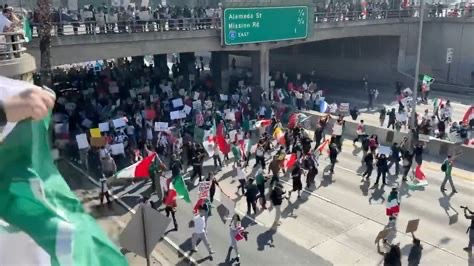When Fear Knocks: Inside America’s ICE Raids and the Protests They Ignited
- Jessica Sanchez

- Jun 12
- 3 min read

Imagine waking up to see your neighbor, your coworker, or even your own family member picked up in a raid—no warning, no warrant, just fear spreading like wildfire. That’s the reality right now in America’s immigrant communities.
Think of this moment like a forest fire—ICE raids ignited embers of resistance, and once one city was ablaze, flames of protest swept across the country. In this post, we’ll explore the root of these protests, the human stories behind them, how communities are responding, and what this means for the larger conversation on immigration justice.
“Flashpoint LA: When ICE Raids Sparked a Firestorm”
Why did June 6 become a tipping point in Los Angeles?
Detailed explanation: On that day, ICE acted in a militaristic fashion—raiding Home Depots, garment districts, and workplaces, detaining dozens, including families—59 people by some counts—without warrants and holding them in grim conditions
Tip: If you witness a raid, record key details—time, place, officer IDs—and share with a trusted organization to support legal follow-through.
“From Silence to Shouts: LA’s Immigrant Roots Fuel Resistance”
LA didn’t just react—it remembered its heritage.
Detailed explanation: With 30% of its 10 million residents being immigrants and 40% of its workforce relying on them, Los Angeles has deep-rooted solidarity . Local leaders like Mayor Karen Bass and Councilmember Hugo Soto-Martínez have mobilized sanctuary-city policies and encouraged peaceful resistance.
Tip: Attend local city council or school board meetings and show up as a supportive community voice.
“Faith on the Frontlines: Religious Voices Rise in Protest”
Clergy aren’t just praying—they’re organizing.
Detailed explanation: In Los Angeles and beyond, Christian, Jewish, and Buddhist leaders are hosting nonviolent protests and spiritual vigils against raids. They draw inspiration from MLK’s teachings and cite moral duty in face of injustice.
Tip: Local houses of worship often offer legal clinics or safe space trainings—reach out and get involved.
“Curfews and Courts: The Federal-State Showdown”
When federal muscle meets state defiance, what happens next?
Detailed explanation: In LA, curfews were imposed, National Guard troops deployed, and even Marines were sent in. Governor Newsom’s legal challenge won a preliminary ruling returning command of the National Guard to the state.
Tip: Stay informed on local court updates and sign petitions that pressure state governments to fight federal overreach.
“Solidarity on the Move: Protests Across America”
Los Angeles lit the match—now watch how the fire spreads.
Detailed explanation: Following LA, cities like New York, San Francisco, Austin, Seattle, Chicago, Denver, and Houston erupted in solidarity marches, sometimes leading to hundreds of arrests .
Tip: Join or organize a “No Kings” protest in your community—check national immigrant justice networks for legal support and guidance.
“Community Tech Shield: Social Media as an ICE Alarm”
Your phone isn’t just for selfies—it’s a lifeline.
Detailed explanation: With 64% smartphone ownership in migrant households, alert networks like Union del Barrio, Siembra NC, and RadarSafe live-stream real-time ICE activity, offer legal guidance, and connect communities .
Tip: Join these networks and set up alerts for your zip code—knowledge is power.
“Public Figures Speak Up: From Kim Kardashian to Clergy”
When celebrities and leaders weigh in, things shift.
Detailed explanation: Celebs like Kim Kardashian said, “There has to be a BETTER way,”spotlighting the issue in pop culture. Meanwhile, clergy emphasize peaceful protest as a path to policy change.
Tip: Amplify these voices online; share their messages and tag local officials demanding safer, fair immigration practices.
From militarized ICE raids to curfews and a coast-to-coast protest wave, this is more than a moment—it’s a movement. We’ve walked through why LA erupted, the role of sanctuary leaders and faith groups, the legal tug‑of‑war over military deployment, and how digital tools helped shield communities. The common thread? Determination, unity, and the belief that humane immigration enforcement is possible.
Let this be your call to step up—whether you’re donating to legal aid, joining a peaceful rally, or alerting your network of ICE activity. Together, we’re not just resisting raids—we’re building a more compassionate America.



Comments